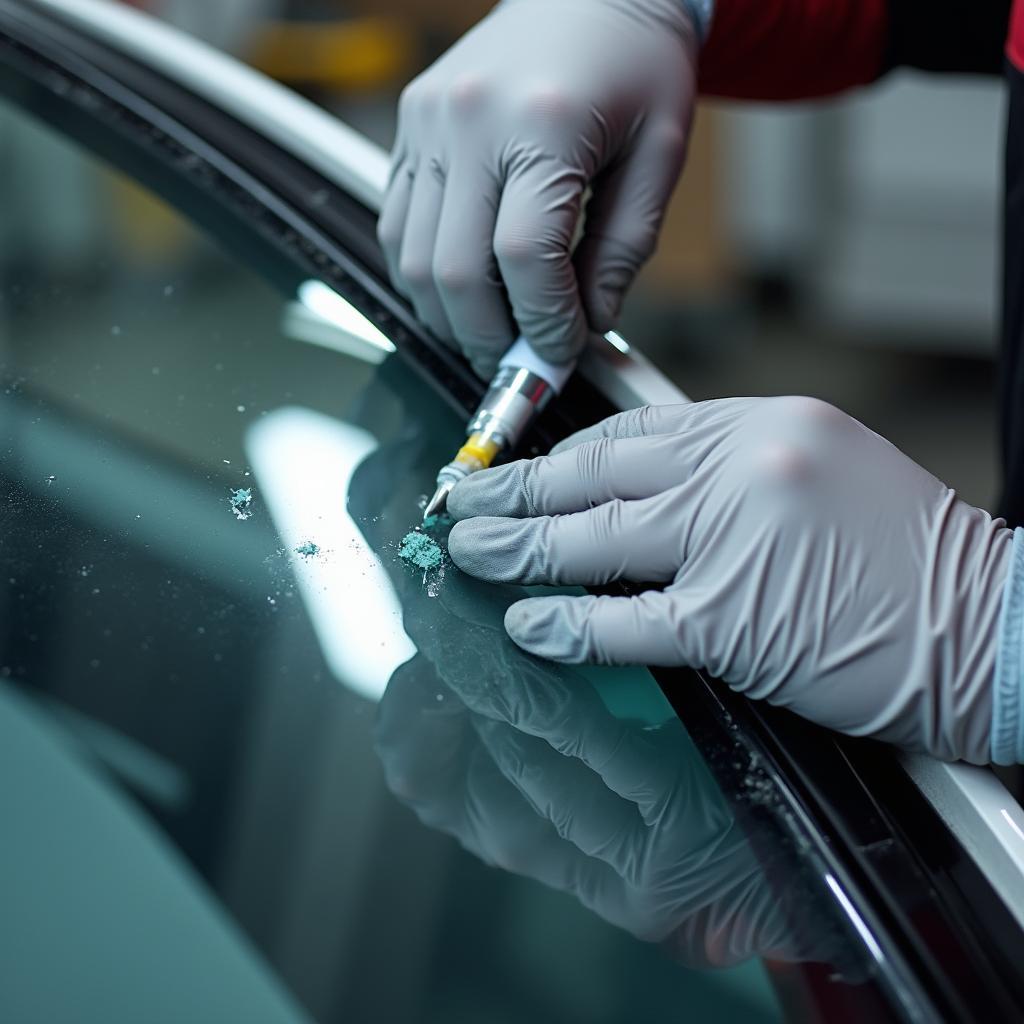Car window damage is an unfortunate reality for many car owners. Whether it’s a small chip from a stray rock or a large crack from an attempted break-in, damaged car windows can be a major inconvenience. While traditional glass windows often require complete replacement, plexiglass offers a durable and cost-effective alternative for car window repair.
Understanding Plexiglass as a Car Window Material
Plexiglass, also known as acrylic glass, is a transparent thermoplastic that has gained popularity as a lightweight and shatter-resistant alternative to traditional glass. Its impact resistance makes it particularly suitable for car windows, offering improved safety in case of accidents or vandalism. Additionally, plexiglass is lighter than glass, which can contribute to improved fuel efficiency.
Benefits of Choosing Plexiglass for Car Window Repair
Opting for plexiglass for your car window repair comes with a number of advantages:
- Cost-Effectiveness: Plexiglass is generally less expensive than traditional glass, making it a budget-friendly option for car window repair.
- Durability: Plexiglass is highly resistant to shattering and cracking, offering long-lasting performance and peace of mind.
- Lightweight: The lighter weight of plexiglass compared to glass can result in slight improvements in fuel efficiency.
- UV Resistance: Plexiglass is formulated to resist yellowing and fading caused by prolonged sun exposure, ensuring clarity and visual appeal over time.
Car Window Repair Plexiglass: The Process
Repairing a car window with plexiglass involves a meticulous process:
- Assessment: A thorough assessment of the damage is conducted to determine the size and shape of the plexiglass sheet required.
- Cutting: The plexiglass sheet is precisely cut to match the dimensions of the damaged window area.
- Preparation: The damaged window area is cleaned and prepped to ensure proper adhesion of the plexiglass.
- Application: A specialized adhesive or sealant is applied to the edges of the plexiglass sheet.
- Installation: The plexiglass sheet is carefully positioned and firmly pressed onto the prepared window area.
- Curing: Adequate curing time is allowed for the adhesive to bond the plexiglass securely to the window frame.
Choosing the Right Plexiglass for Your Car Window Repair
Not all plexiglass is created equal. Consider these factors:
- Thickness: The thickness of the plexiglass sheet will depend on the size and location of the window being repaired.
- Tint: Plexiglass is available in various tints to match your existing windows or achieve desired levels of privacy and UV protection.
- Coating: Some plexiglass products come with specialized coatings that enhance scratch resistance and UV protection.
DIY vs. Professional Car Window Repair Plexiglass
While DIY enthusiasts might be tempted to tackle car window repair plexiglass projects themselves, seeking professional installation is highly recommended. Precise measurements, proper adhesion techniques, and specialized tools are crucial for a successful and long-lasting repair.
“Attempting a DIY plexiglass car window repair without the necessary expertise can lead to issues like leaks, air noise, and compromised structural integrity,” cautions John Miller, a seasoned automotive glass technician. “It’s always best to leave it to the professionals to ensure a safe and reliable repair.”
Conclusion
Car window repair plexiglass offers a practical and cost-effective solution for addressing window damage. Understanding the benefits, the process, and the importance of professional installation can help car owners make informed decisions about their car window repair needs. By choosing plexiglass and entrusting the repair to experienced technicians, you can restore your car’s safety, functionality, and aesthetic appeal without breaking the bank.



